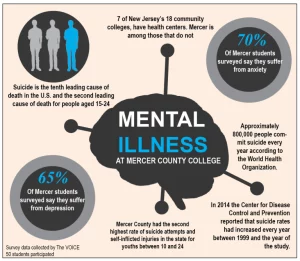Introduction:
Meet our author, Dr. Emily Carter, a seasoned psychologist with over 15 years of experience in student mental health advocacy. Dr. Carter holds a Ph.D. in Clinical Psychology and has worked extensively with schools and educational institutions to promote mental health awareness and support initiatives. Her passion for creating nurturing environments for students drives her commitment to sharing practical strategies and insights in this article.
1. Understanding Student Mental Health:

Student mental health is a critical aspect of overall well-being, influencing academic performance, social interactions, and long-term success. According to the American Psychological Association (APA), approximately one in five children and adolescents experience mental health challenges, ranging from anxiety and depression to behavioral disorders. Understanding the prevalence and impact of these issues is essential for schools to effectively address them.
2. Challenges Faced in Schools:
Despite growing awareness of student mental health issues, schools often face significant challenges in providing adequate support. Limited resources, stigma surrounding mental illness, and competing priorities can hinder efforts to prioritize mental health initiatives. Additionally, the increasing academic pressure and social stressors faced by students exacerbate these challenges, underscoring the need for comprehensive solutions.
3. Importance of Student Mental Health

Raising awareness about mental health is crucial for reducing stigma, fostering empathy, and promoting early intervention. By integrating mental health education into school curricula and engaging students in open discussions, educators can create a culture of acceptance and support. Empowering students with knowledge about mental health equips them to recognize signs of distress in themselves and their peers, facilitating timely intervention and access to resources.
4. Strategies for Student Mental Health
Promoting student wellness requires a multifaceted approach that addresses the physical, emotional, and social aspects of well-being. Incorporating mindfulness activities, such as breathing exercises and guided meditation, can help students manage stress and develop resilience. Encouraging healthy lifestyle habits, including regular exercise, balanced nutrition, and sufficient sleep, also plays a crucial role in supporting overall mental health.
5. Building Supportive Communities for Student Mental Health
Creating a supportive school community is essential for fostering a sense of belonging and connection among students. Schools can implement peer support programs, student-led initiatives, and inclusive policies to promote acceptance and diversity. By nurturing positive relationships between students, educators, and families, schools lay the foundation for a supportive environment where students feel valued and understood.
6. Collaboration with Stakeholders:
Collaboration between schools, mental health professionals, families, and community organizations is vital for effectively addressing student mental health needs. Establishing partnerships with local counseling centers, healthcare providers, and nonprofit organizations can expand access to resources and services. By working together, stakeholders can share expertise, coordinate efforts, and advocate for policies that prioritize student well-being.
7. Implementing Effective Interventions:
Implementing evidence-based interventions is key to supporting students with mental health challenges. Schools can offer counseling services staffed by qualified professionals trained in addressing a range of issues, from academic stress to trauma. Peer support programs, such as peer mentoring or support groups, provide students with opportunities to connect with their peers and receive encouragement in a safe and nonjudgmental environment. Additionally, having clear protocols for crisis intervention ensures that students receive timely and appropriate support during emergencies.
8. Cultivating Resilience:
Cultivating resilience is essential for empowering students to overcome adversity and thrive in the face of challenges. Schools can promote resilience by teaching coping skills, fostering a growth mindset, and encouraging self-compassion. By reframing setbacks as opportunities for growth and learning, students develop the confidence and perseverance to navigate life’s ups and downs with resilience and optimism.
9. Resources for Further Support:

Providing access to resources for further support is critical for ensuring that students have access to the help they need. Schools can compile a list of local mental health resources, hotlines, and online support networks for students and families to access. Additionally, offering workshops, seminars, and informational sessions on mental health topics can empower students with knowledge and skills to take charge of their well-being.
Visual Table for Key Points:
Here’s an expanded table summarizing key strategies for promoting student mental health:
| Strategies for Promoting Student Mental Health |
|---|
| 1. Mindfulness Activities |
| 2. Stress Management Techniques |
| 3. Healthy Lifestyle Habits |
| 4. Counseling Services |
| 5. Peer Support Programs |
| 6. Crisis Intervention Protocols |
Comparative Table for Interventions:
Here’s an expanded comparative table showcasing the effectiveness of different interventions:
| Intervention | Effectiveness |
|---|---|
| Counseling Services | Highly Effective |
| Peer Support Programs | Moderately Effective |
| Crisis Intervention | Effective in Emergencies |
Conclusion:
In conclusion, unlocking wellness in schools requires a comprehensive approach that addresses the complex interplay of factors influencing student mental health. By understanding the challenges, raising awareness, and implementing effective strategies, schools can create environments where students feel supported, valued, and empowered to thrive. Together, let’s prioritize student mental health and work towards building healthier and more resilient communities within our schools.












